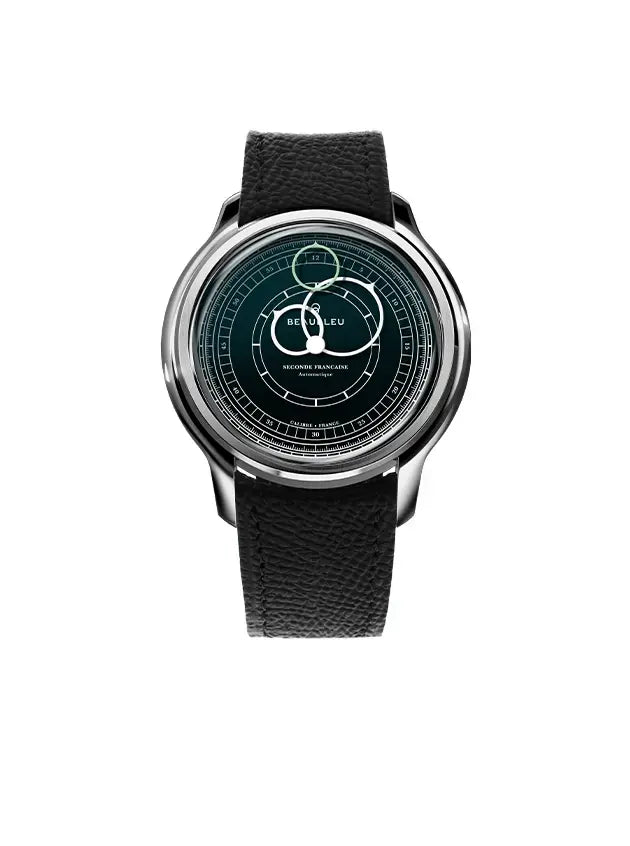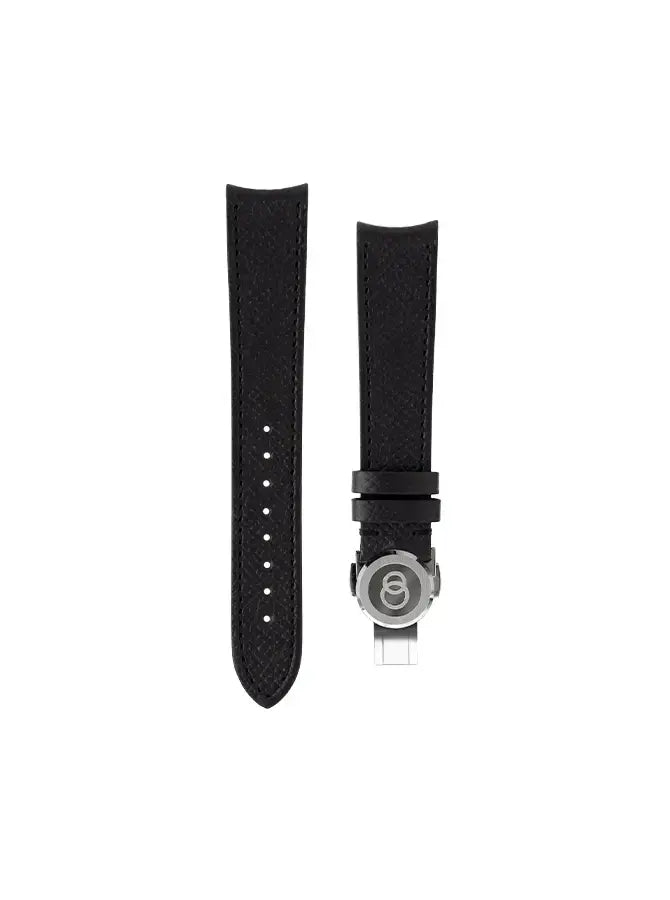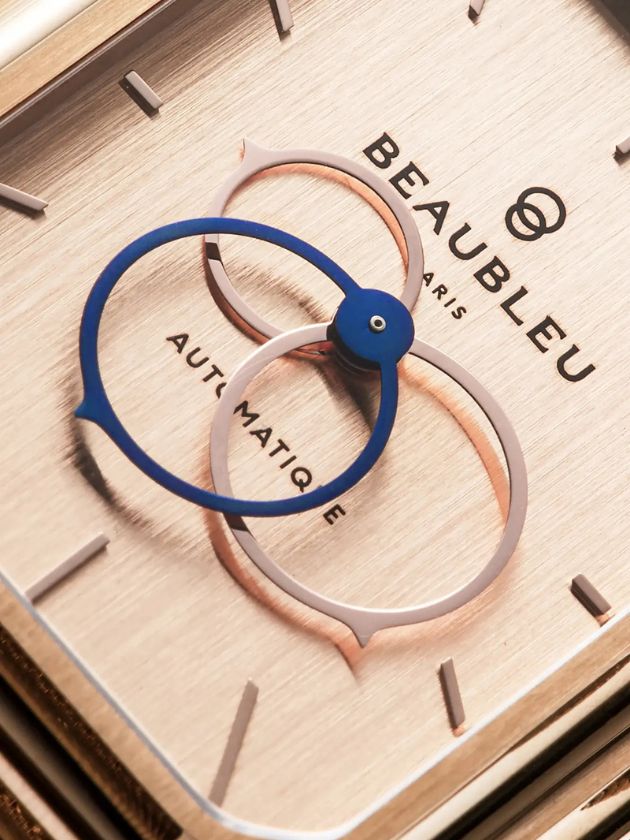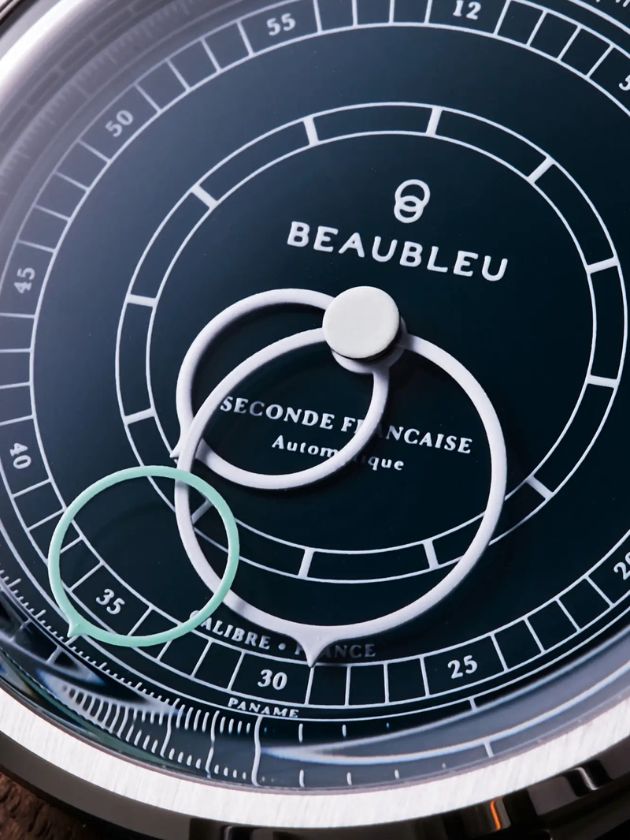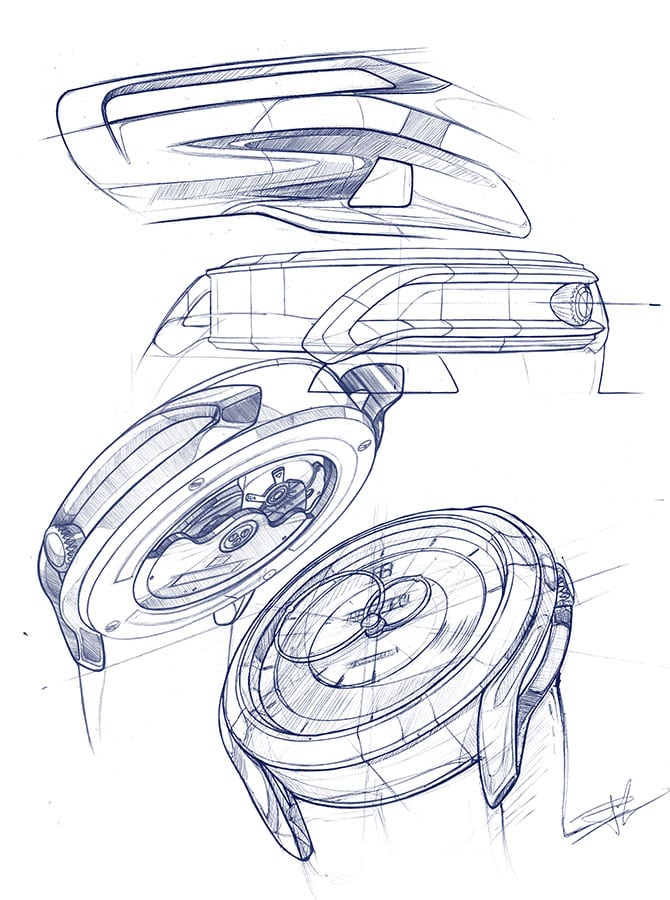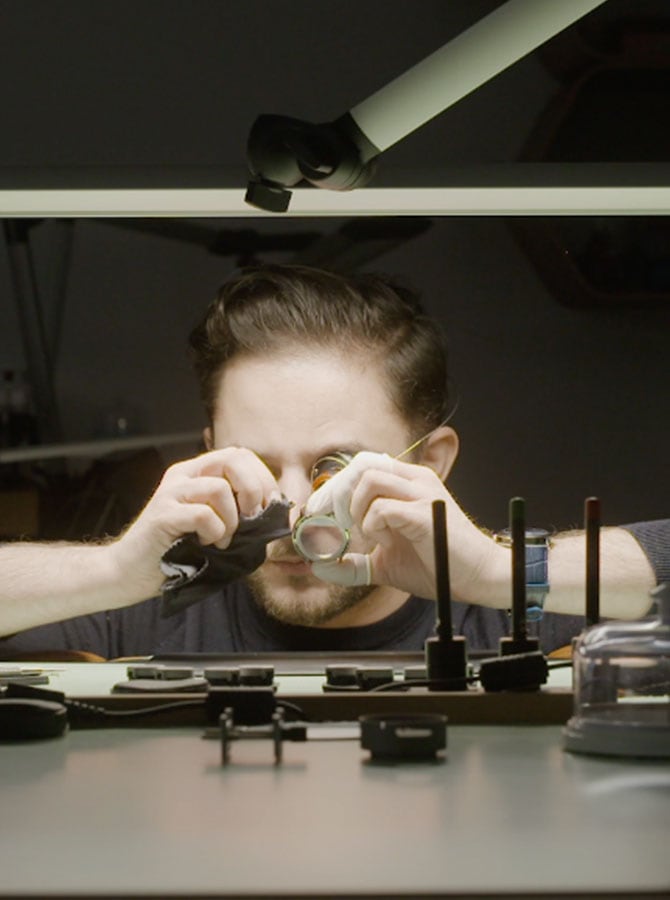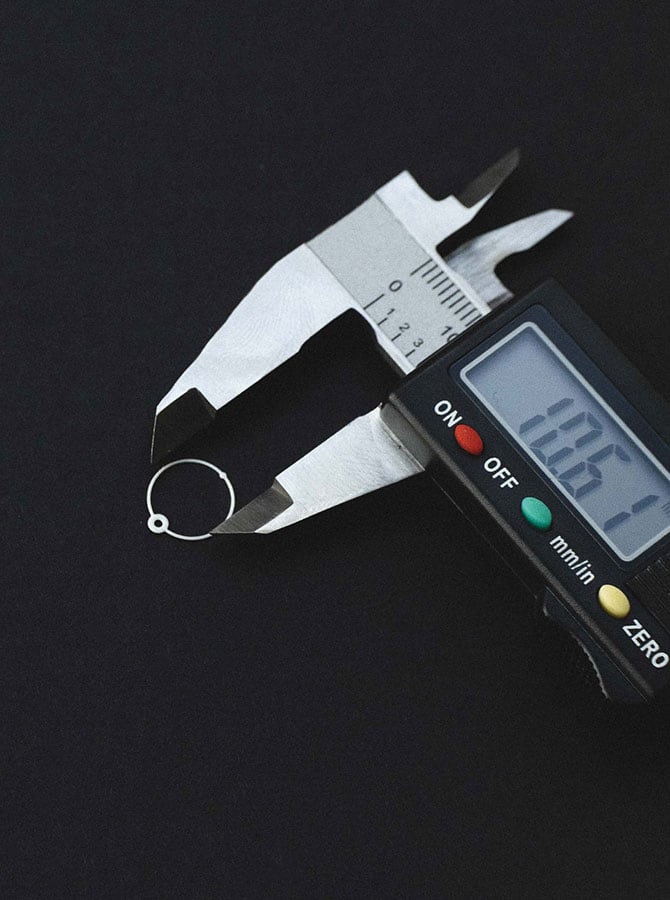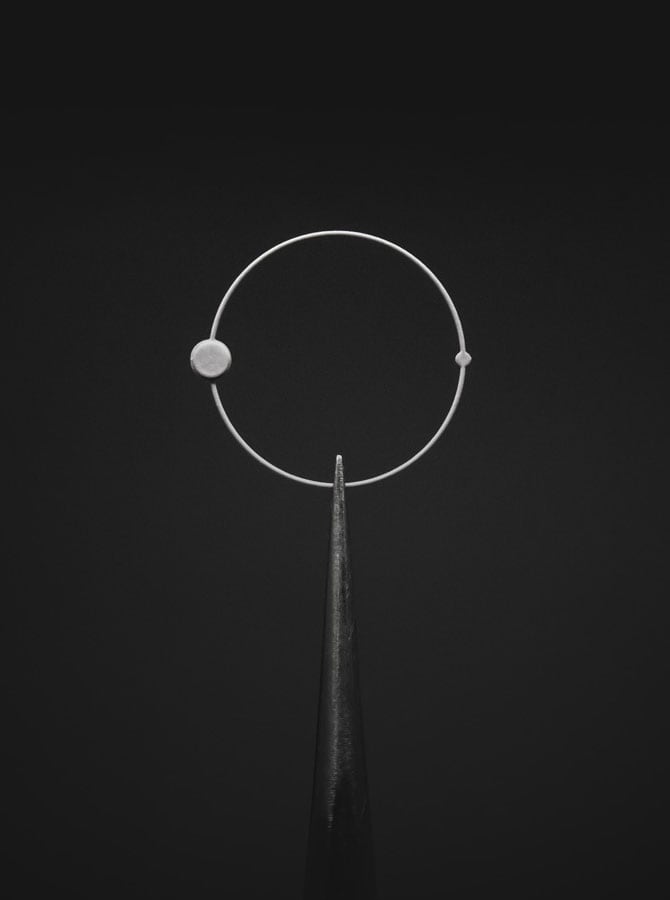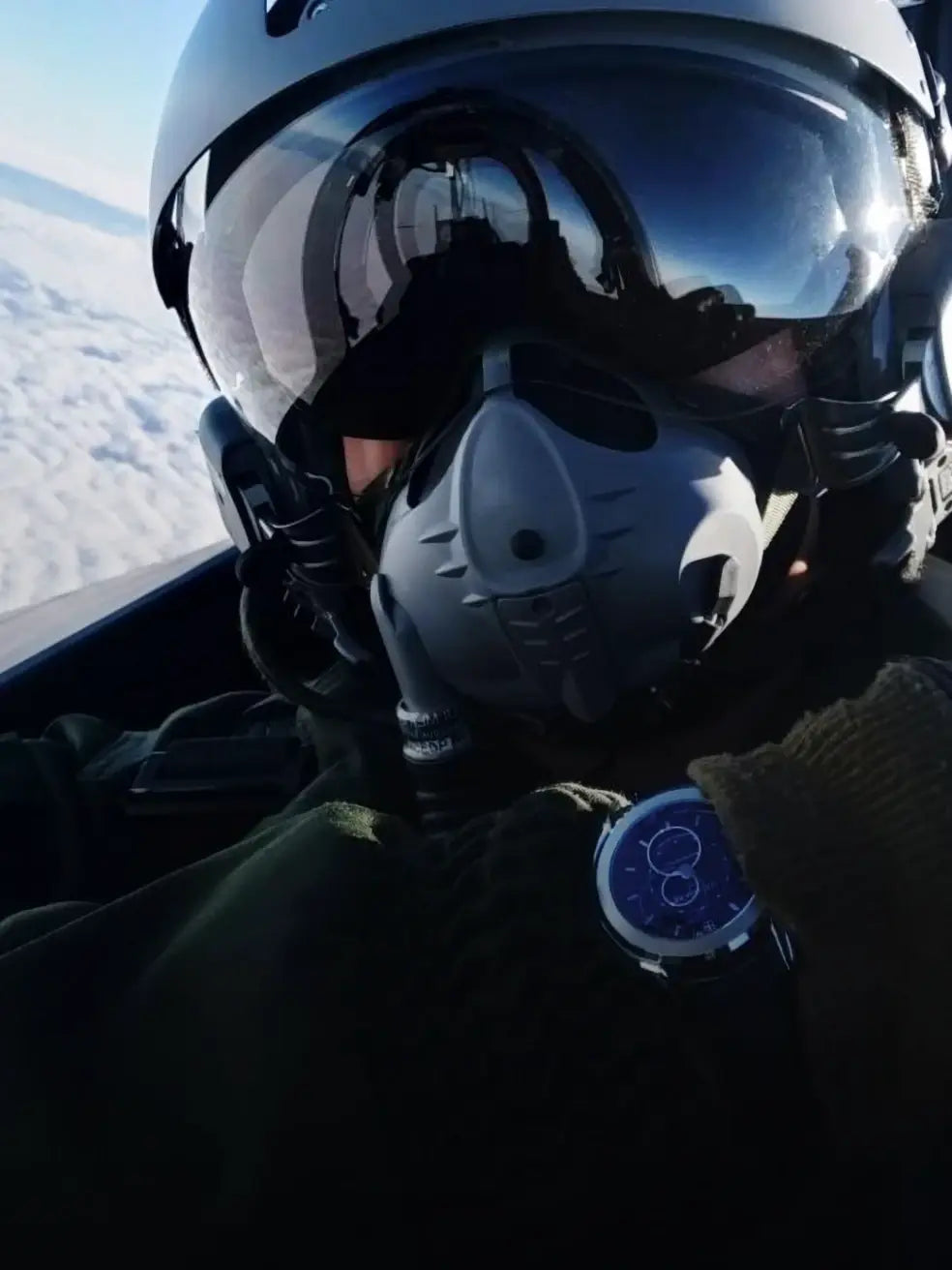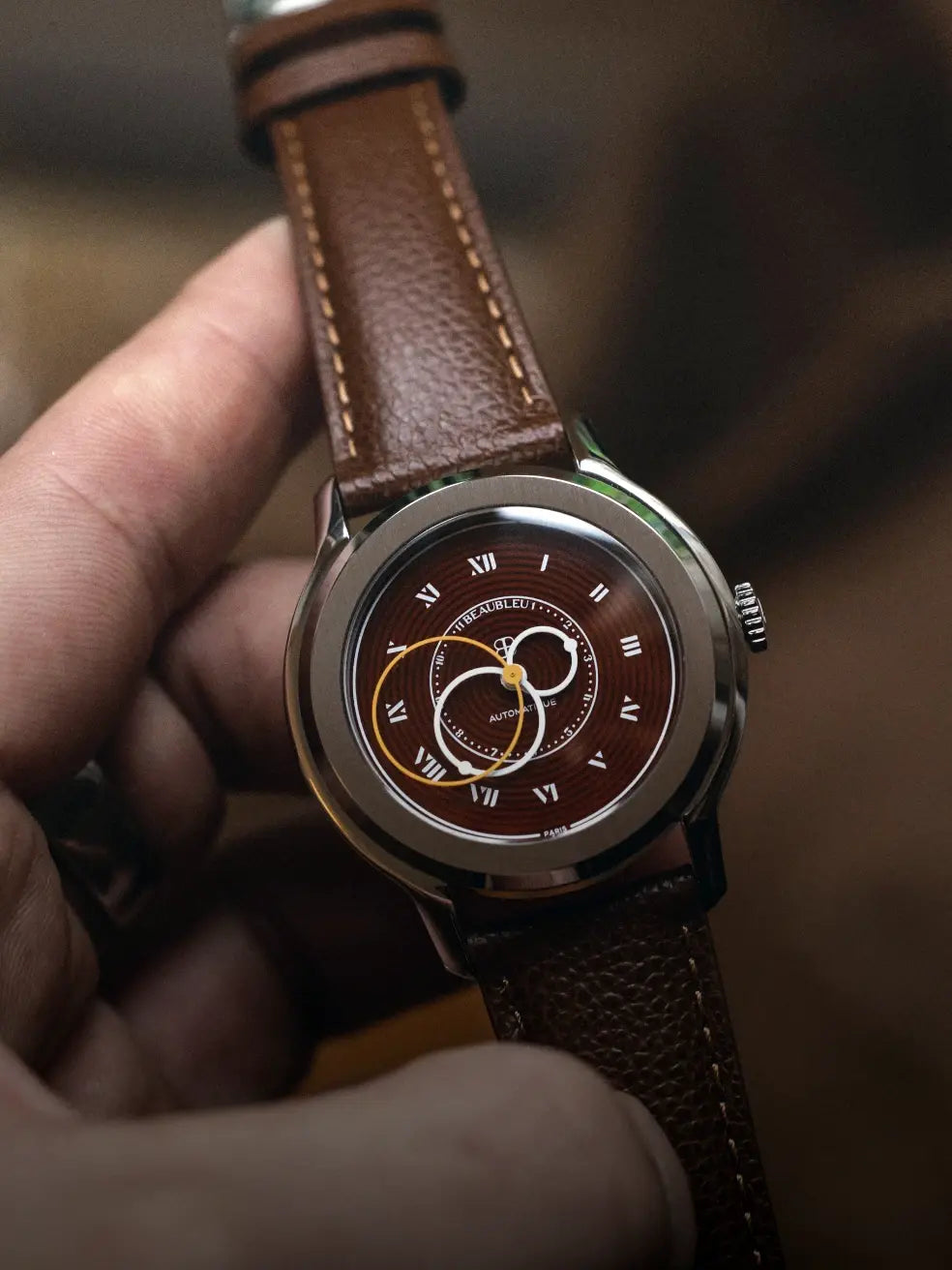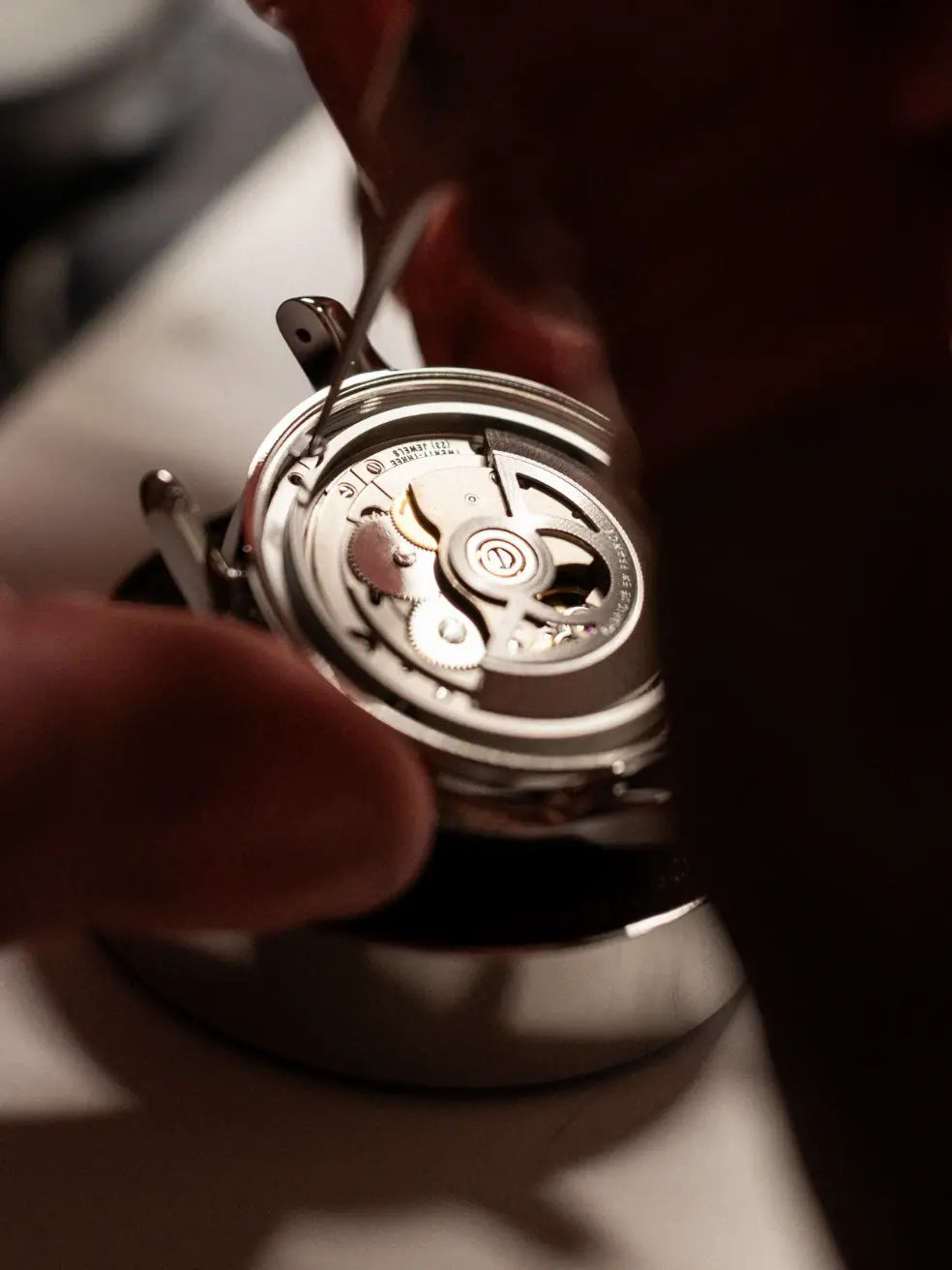
Ecce Figura - Control
Behind the scenes at the Beaubleu Workshops are revealed through the Production Journey. A series of articles created to explain the manufacturing stages of Beaubleu watches and the challenges they pose.
Previously, a new chapter was opened in Beaubleu’s craftsmanship — personalization. In this fifth part, we take a look at the control stages carried out before the Ecce Figura pieces are fully completed.
The movement
Using a chronocomparator—a machine that we could call a blood pressure monitor specific to the watchmaking industry—the watchmaker will perform a check of the movement. The first step is to calculate the frequency, the number of oscillations made by the movement's balance wheel. The procedure consists of placing the running watch on a sound sensor that will calculate the number of vibrations made in hertz. This is a crucial factor, because the frequency then determines many factors such as the fluidity of the hands, the longevity of the movement, and by extension the amplitude, precision, and dead center.
Amplitude is the maximum rotation angle of the balance wheel. This data is directly calculated by the chronocomparator using the frequency. If the amplitude is too low, it will impact the life of the movement (because it reflects excessive friction, friction in the cogs, etc.). Our watchmakers will therefore ensure that it respects the ideal value of 270 degrees. Below this, a complete overhaul of the movement is carried out before being tested again.
The next step is to assess the accuracy: Beaubleu watchmakers will perform several tests by positioning the watch in various positions (dial up, crown down, watch lying flat, watch rotating, etc.). This step is carried out over several days to ensure that the watch maintains a gain/delay of -9/+9 seconds per day. If not, adjustments are made to the movement, then new tests are carried out on the watch to obtain this result.
Finally, the dead center: this is the so-called “neutral” zone during which the balance wheel is not carried by any mechanical force and continues to function on its own. This phase is extremely brief but nonetheless of great importance: it ensures a regular and reliable movement. If it is poorly adjusted, this can directly influence the precision of the watch. The objective of this stage is thus to guarantee the regularity of the balance wheel in its neutral zone, and by extension during the entire operating cycle of the watch (being 42 hours for the Ecce Figura).

Waterproofing
After closing the case, each watch undergoes a water-resistance test. It is placed in a sealed chamber where the air is pressurized. Pressure variations allow the detection of even the slightest leak, invisible to the naked eye, and therefore the reliability of the seals. This check ensures that the crown and case back perfectly fulfill their role as a barrier, protecting the movement from humidity and dust. Beaubleu watchmakers ensure that the watch withstands a pressure of 3 atmospheres (ATM) so that each Ecce Figura is perfectly water-resistance.
Aesthetics
Then comes the final phase of control: the aesthetics of the watch. Under a magnifying glass, the watchmakers study every detail: they ensure that there are no scratches on the case, that each part is in its exact position, that there is no dust in the dial, that the dial's pad printing is perfectly clear... Depending on the customization chosen, the same procedure applies to the stitching of each leather strap, the perfect regularity of the buckles and steel bracelets...
Once this step has been validated, it is then possible to add the final optional personal touch: engraving the case back and/or embossing the strap.
The engraving is carried out using a meticulously calibrated and tested laser engraver. Calibration is carried out before each engraving to ensure optimal marking accuracy and to correctly align the laser beam with the case back, thus allowing a maximum of 42 characters to be placed on it. For the bracelet embossing, a hot-pressed marking of up to 3 characters is made on the inside of the bracelet. Subtle details make each watch all the more unique.
Only when all these steps have been validated will the watchmaker be able to place his signature on the certificate of authenticity that will accompany the watch.

This concludes this fifth production journey, dedicated to the inspection phases. The next and final part will raise the curtain on the final stage of the journey: the one where the watches, after having gone through all these stages, leave the workshop to join their new setting.


